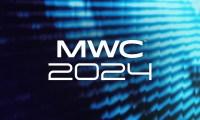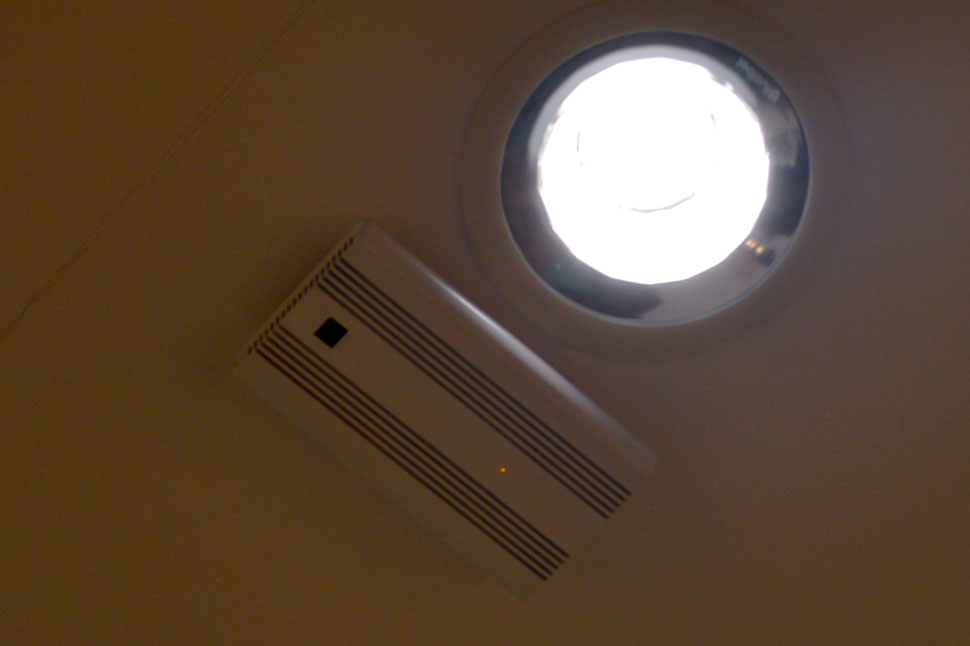Even if you’ve never heard of Li-Fi before, you can probably work out what it is. Instead of accessing the Internet wirelessly using radio frequencies, like Wi-Fi does, you use the visible light spectrum. It’s a very exciting technology that has been on our radar for a few years now, ever since Professor Harald Hass gave a TED talk on the topic back in 2011.
This year at Mobile World Congress we sat down with PureLi-Fi COO, Harald Burchardt, and got to see Li-Fi in action for ourselves. You could say we’ve seen the light.
“The way that Li-Fi works is that we use LED lights and turn them into wireless transmitters,” Burchardt told Digital Trends. “Li-Fi, as you can tell by the name, is a service that’s akin to Wi-Fi, except that we use LED light, and specifically the lighting medium, to communicate data wirelessly.”
“The way that Li-Fi works is that we use LED lights and turn them into wireless transmitters.”
Professor Harald Hass started researching this back in 2003, because he saw the upcoming spectrum crunch. He correctly predicted that the lack of radio frequency spectrum for mobile devices would become a real problem. (These days, it’s very difficult to get a connection on some Wi-Fi frequencies if you’re in an urban area.) Around the same time, new LED light technology hit the market, and Hass saw an opportunity to bring the two together. He found a way to use these electronic lighting components for high speed data communication, without interfering with existing radio frequency infrastructures.
PureLi-Fi was founded in 2012 with the goal of commercializing the technology. The demo area it set up at MWC consisted of three Li-Fi access points. These were roughly brick-sized boxes attached to LED downlighters, covering an area of around 20 square meters. The boxes effectively turn the lights into wireless antennas.
To receive data from these lights you need a dongle that acts as a wireless modem of sorts, which is plugged into your laptop or tablet. The dongles were a bit smaller than a pack of cards and plug in via USB, which also provides the power. There’s a sensor that catches the light coming down and then an infrared component that sends a signal back up. The overhead lights also have a networking component, so it’s possible for multiple users to connect to a single light source, and to move from one light source to another without losing your connection.
The Li-Fi connection pops up in exactly the same way an available Wi-Fi network does. Burchardt connected his laptop to it and began to stream a YouTube video. It worked perfectly with no buffering in sight, even when he walked around between the lights.
The speed of that system is 40Mbps, both downloading from the light and uploading from the dongle. The light has a 60-degree field of view which provides a coverage area of 9 to 10 square meters. The maximum data rate reduces slightly if you move to the edges of the light, dropping to around 75 percent, but the light can bounce off objects and still deliver a signal, it’ll just be slower the further you are from the main beam.
Burchardt pointed out that you can’t fit more than one Wi-Fi access point into a similar sized area, and if you do, the information would bleed everywhere around. That highlights two key advantages of Li-Fi: you can transfer more data in a localized area, and it’s more secure.
Li-Fi Prototype: The inventor of light-based ‘Li-Fi’ Internet has completed the first working prototype
“The more Li-Fi enabled lights you have in an area, the higher your total capacity is,” explained Burchardt. “Light also doesn’t penetrate through walls the same way Wi-Fi does, so it allows you to create networks with much higher security.”
Take a look at available Wi-Fi networks on your phone in the typical apartment or office and you’ll generally see a lot of options. Not only is that a huge amount of interference, but it’s also a security risk. With Li-Fi you can contain your network to your physical location, and that’s proving to be a major attraction for financial institutions, government agencies, and research institutes, but it should also appeal to anyone who values their privacy.
As it stands, PureLi-Fi is adding this functionality to off-the-shelf lightbulbs and plugging dongles into devices to receive data, but the longterm goal is to get the technology inside devices and lighting grids.
“We would be looking, ideally, at turning every light into its own access point,” said Burchardt. “We’re working with a French lighting company called Lucibel on integrating the access point into the luminare itself.”
The hope is that, as the technology matures and becomes more affordable, it will be assimilated into LED bulbs, making it easy to adopt. The other side of the problem is the receiver.
“In order to make this a mass market proposition we need to minimize the dongle into an ASIC (application-specific integrated circuit) or SoC module,” explained Burchardt. “So it can be incorporated into all manner of devices whether it be smartphones, tablets, laptops, accessories, wearables, or any other kind of electronic devices.”
On the other hand, there are a lot of different ways the tech could connect without noticeably impinging the design of our devices. It could be something that sits under the display of your smartphone, for example.
Li-Fi will also be able to offer much greater bandwidth as lighting technology improves. The illumination LEDs they use right now are designed to be low bandwidth, because they’re supposed to deliver constant illumination at high power. But the industry is moving toward RGB, where each individual channel is higher bandwidth, and there are three to choose from. You can also add a number of different colors to mulitplex that over different channels.
Going further, laser LEDs have already been incorporated in BMW i8 headlights, for very long range communication, and these have even higher bandwidths.
“Once those kinds of light fixtures are available, coupled with low cost, low power, high frequency sensors, that’s when we can really unlock the true potential of Li-Fi,” explained Burchardt. “Delivering multiple tens of GHzs per second from a single fixture.”
Li-Fi can already send 10 to 50 times the amount of data that Wi-Fi can in a single area, depending on the exact setup, but laser LEDs could boost that as high as 100 times.
Li-Fi can already send 10 to 50 times the amount of data that Wi-Fi can in a single area.
It’s worth remembering that Li-Fi is not aiming to be a direct replacement for Wi-Fi and cellular networks, it’s a complementary technology that will work well in certain situations.
“In the same way that a cellular communication system allows you to roam over an entire city or an enterprise Wi-Fi network allows you to roam over a campus, a Li-Fi network allows you to roam through a room or through any lighting infrastructure, which is almost any indoor area,” Burchardt told us.
Li-Fi adoption could lift a great deal of strain from our existing networks and free up bandwidth for outdoors, or for people with older devices indoors. It seems likely that big businesses will lead adoption here and it may be quite some time before we see this kind of technology in home electronics, but it’s definitely coming.
“This technology will be everywhere in 10 to 15 years, it will be incorporated into every light and every device,” asserted Burchardt. “PureLi-Fi’s challenge is to be the one to do it, and ideally to do it in a shorter time frame than that.”






